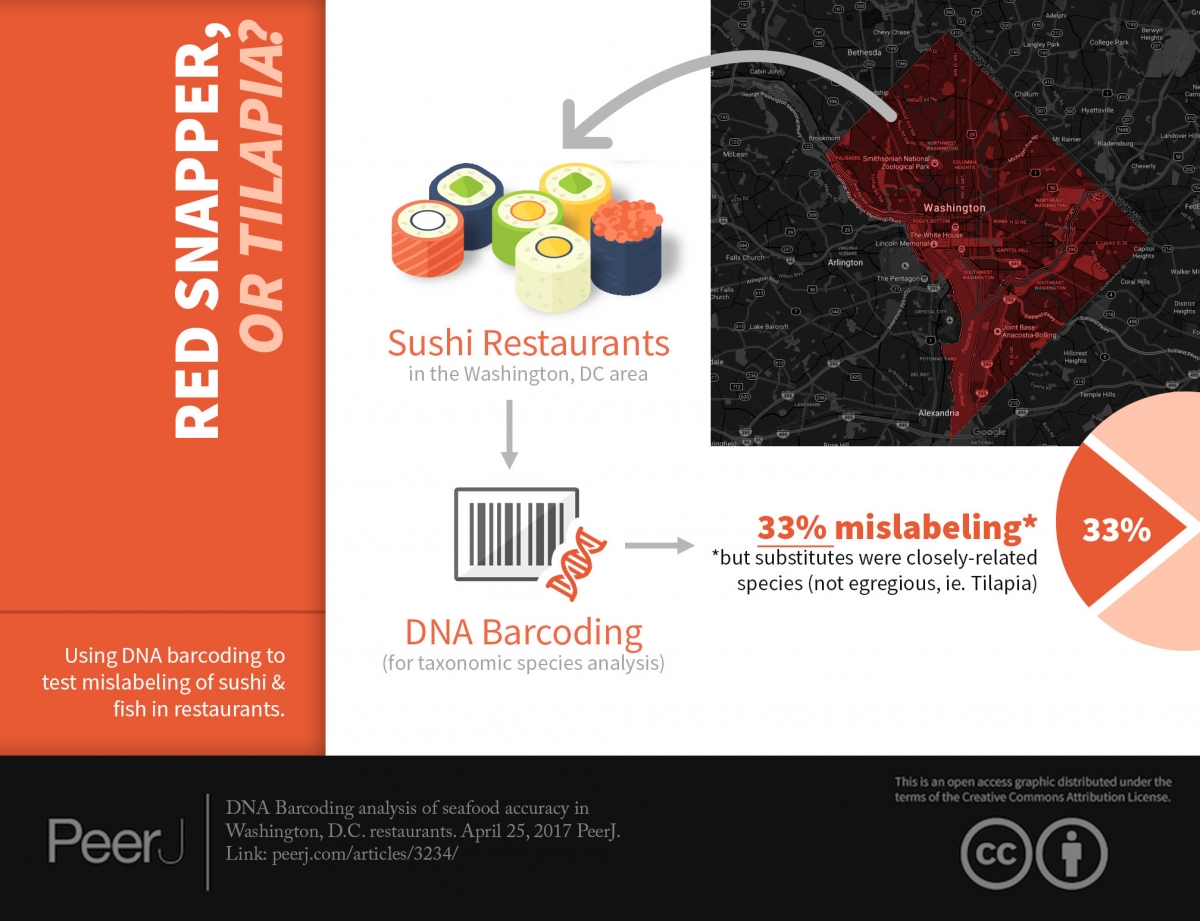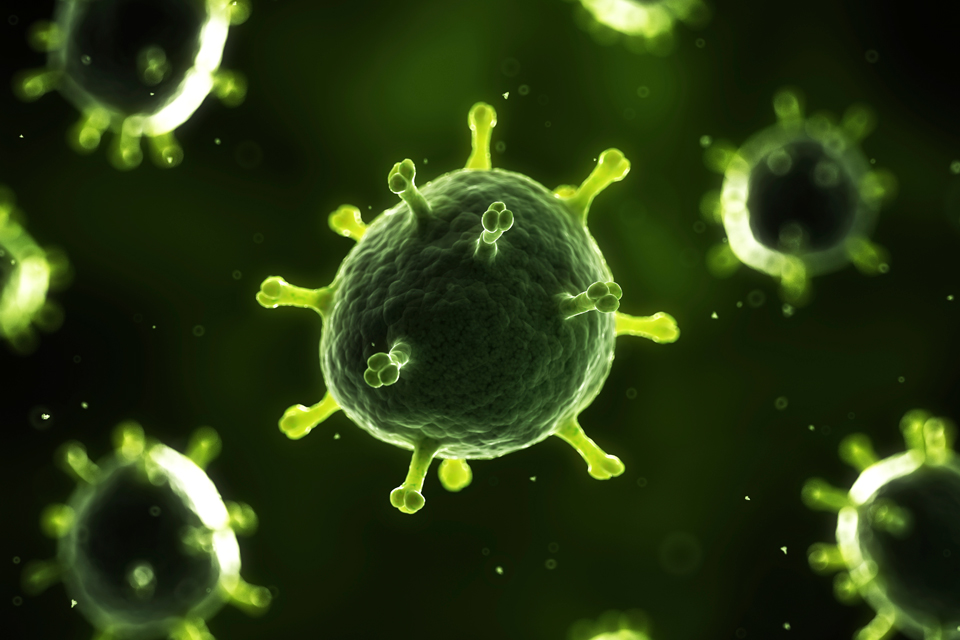George Washington University scientists found that 33 percent of the seafood dinners sold at six Washington, D.C., restaurants had been mislabeled and swapped with closely related fish species or those considered an acceptable alternative to the menu listing.
Previous studies in other cities have shown widespread seafood substitution where consumers are sold a completely different fish or sushi from the one listed. Those studies have indicated seafood may be mislabeled as often as 26 to 87 percent of the time.
In egregious cases, an unsuspecting diner can be sold an expensive tuna that is actually a completely different species of fish, often one that is much cheaper or on the endangered species list, said Keith Crandall, director of the Computational Biology Institute at the Milken Institute School of Public Health and leader of the new study, which was published this week in PeerJ.
Dr. Crandall and his team used DNA barcoding to test 12 seafood samples purchased in six D.C. restaurants and overall found they were doing a pretty good job.
“Diners that ordered tuna got tuna—although maybe a slightly different type of tuna,” Dr. Crandall said. “We didn’t see the kind of outright seafood fraud that has been reported in other cities.”
Dr. Crandall recruited graduate student David Stern and his wife, who visited six popular local restaurants and ordered seafood dinners. They enjoyed dishes like crusted albacore tuna and pesto Chilean sea bass. Dr. Crandall picked up the tab.
Before enjoying their meals, the undercover scientists snipped off a small sample and stored it in a test tube to bring back to the lab. Mr. Stern then used DNA barcoding to identify a telltale region of the Cytochrome Oxidase I mitochondrial gene. This technique compares the seafood sample with a database of DNA barcodes from known species to identify it.

Of the 12 samples, the research team found four mislabeled menu items—one Chilean sea bass, two tunas and one rock shrimp.
Other studies have found restaurants swap out the item listed on the menu for a species that is endangered or threatened. The GW team only found one sample with a conservation concern. The team’s DNA barcoding analysis of the “everything tuna” sample identified it as Thunnusobesus, a species of tuna that is listed as “vulnerable” on the International Union for Conservation of Nature’s red list.
The substitutions in this study were all closely related species to the menu item or a legally acceptable swap, Dr. Crandall said. Swapping out seafood does a disservice to customers, he said, who are trying to avoid endangered species or are paying a higher price for a species they think is a delicacy.
The researchers found one D.C. restaurant had listed rock shrimp on the menu but DNA barcoding showed it was actually serving whiteleg shrimp. Whiteleg shrimp are typically found in aquaculture farms and are not as flavorful as deep-water rock shrimp.
This study, and others like it, cannot pinpoint where the swap occurs. Dr. Crandall said buyers for restaurants could inadvertently purchase mislabeled seafood. Substitution of a cheaper fish for a more expensive species could happen anywhere along the food chain from the fishing boat to the fishmonger or the restaurant.
In response to past reports of seafood fraud, D.C. and other cities passed legislation aimed at protecting the consumer. In D.C., the Consumer Protection Act allows patrons to purchase samples of food or other goods for the express purpose of testing their identity.
“For the most part, our study found that D.C. diners with a craving for seafood are getting what they paid for,” Dr. Crandall said.




